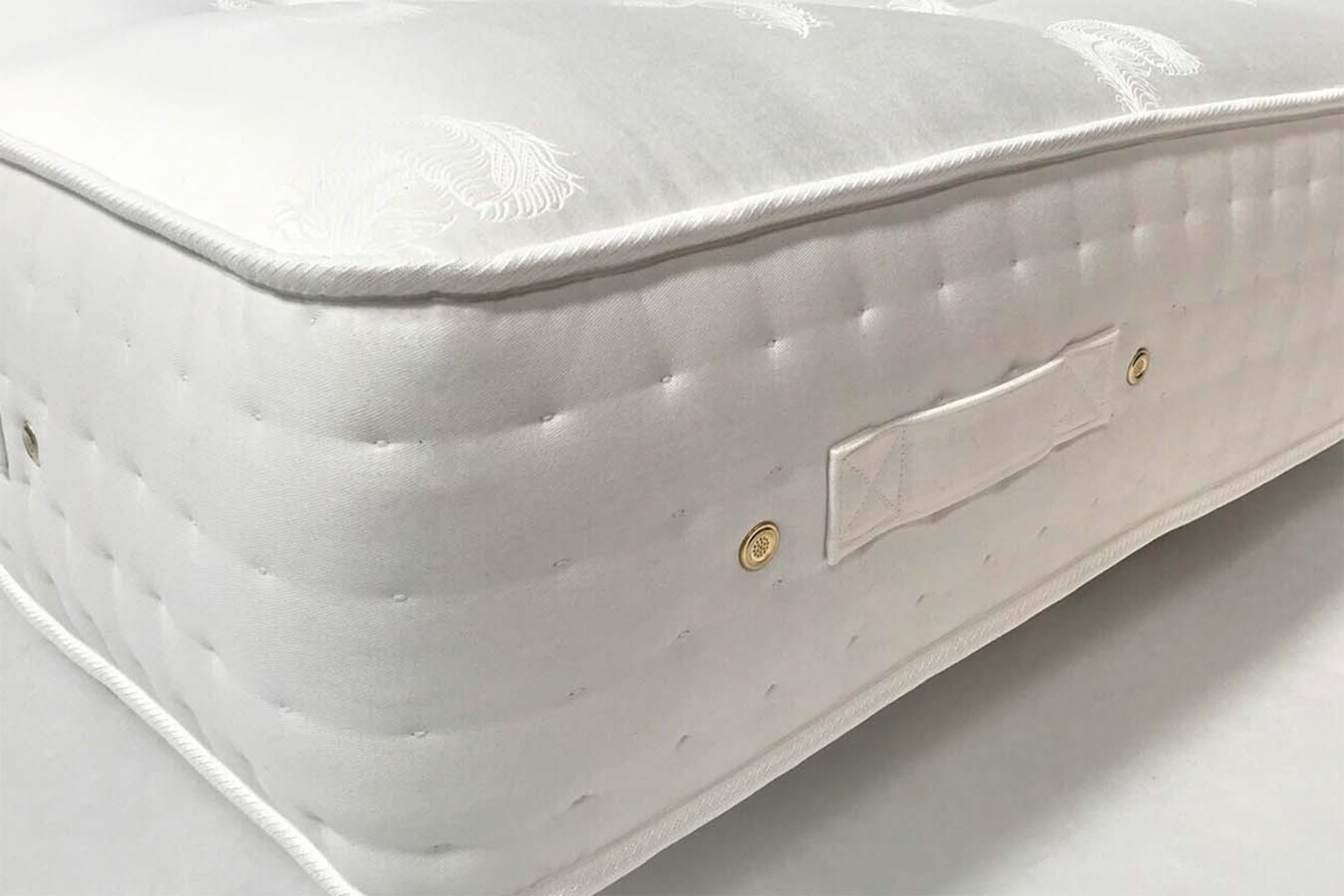- Updated :
- Published :
- Buying Guides
- 0 likes
- 897 views
- Tags: beds
Getting a good night's sleep starts with having the right mattress. We’ve all had those nights when sleep doesn’t come easily, tossing and turning, waking up more exhausted than when we went to bed. The truth is, the mattress you sleep on can make or break the quality of your rest—and, in turn, your overall well-being. Sleep isn’t just about closing your eyes for a few hours. It’s when your body recharges, your mind resets, and your health is restored. A pocket-sprung mattress that supports your unique sleep needs is key to waking up refreshed and ready to take on the day.
From physical comfort to mental clarity and even emotional balance, sleep is central to how we function. A bad mattress can cause more than just a rough night's sleep. Think about chronic back pain, neck stiffness, or restless nights where your mind is wide awake because your body can’t get comfortable. Over time, lack of sleep starts to wear you down, impacting your productivity, mood, and overall quality of life. Investing in a quality mattress isn’t just about comfort; it’s about improving your mental, physical, and emotional health.
That’s where Magna Beds comes in. Specialising in high-quality mattresses designed to meet a wide range of sleep needs, Magna Beds offers options that cater to different sleep styles, body types, and personal preferences. Whether you're a side sleeper who needs extra cushioning for your hips and shoulders or someone who struggles with back pain and requires firm support, there's a pocket-sprung mattress tailored just for you.
But with so many choices, how do you know which one is right for you? Are you struggling to figure out if you need memory foam, latex, or a hybrid mattress? Maybe you’re unsure if a soft or firm mattress is the way to go? Don’t worry; you’re not alone. This guide is here to take the stress out of choosing your next mattress. We’ll walk you through everything you need to know, from the different types and sizes to the materials and features that will help you sleep better for years to come.
By the end of this guide, you’ll have a clear understanding of what mattress works best for your body and sleeping style. You’ll learn about the different options available and how each one can provide you with the comfort and support you need for a perfect night’s sleep. Whether you’re upgrading your current mattress or buying one for the first time, this guide will help you make an informed decision that suits your needs and budget. So, let’s dive in and start the journey to finding your perfect sleep!

Why Choosing the Right Mattress Matters
It's easy to underestimate the impact a mattress can have on your life. But think about it: you spend roughly a third of your life in bed, and the surface you sleep on can make all the difference between waking up feeling refreshed or groggy. The right mattress is not just about comfort; it’s about ensuring your body gets the support it needs while you rest. A mattress that really suits you will help your body recover overnight, improving not just your sleep but your overall health and well-being.
A poor-quality or unsuitable mattress can wreak havoc on your sleep quality. Have you ever woken up with a stiff back or aching neck? These are common signs that your mattress isn’t doing its job. A mattress that lacks proper support can lead to back pain, joint discomfort, and restless sleep. Over time, this lack of quality sleep can contribute to chronic pain, fatigue, and even more serious long-term health issues like poor posture, stress, and decreased productivity.

The science backs it up. Studies have shown that poor sleep quality—often caused by inadequate mattress support—affects everything from your cognitive function to your immune system. Chronic sleep deprivation can lead to higher stress levels, reduced ability to focus, and even mental health issues like anxiety and depression. Simply put, a bad mattress can leave you feeling out of sync and struggling through your days.
Now, imagine waking up each morning feeling rested and rejuvenated. The right mattress can reduce pressure on your joints, support your spine, and help you fall into a deep, uninterrupted sleep. When your body is properly aligned during sleep, it relaxes, allowing muscles and joints to heal. This not only improves your physical health but also helps reduce stress, leaving you more energised and productive throughout the day. A good mattress can even improve your posture by providing balanced support, which leads to fewer aches and pains and better overall mobility.
At Magna Beds, we understand that no two sleepers are the same. That's why we offer a range of mattresses, each designed to meet specific comfort and support needs. Our mattresses are crafted to provide the perfect balance of support and comfort, helping you wake up feeling refreshed and ready to tackle the day. We focus on offering mattresses that not only improve sleep quality but also address specific issues like back pain, overheating, and restless sleep.
Incorporating expert design and cutting-edge materials, Magna Beds creates products that make sleep a rejuvenating experience. When you choose one of our pocket-sprung mattresses, you’re investing in more than just a product; you’re investing in better sleep, better health, and better days ahead.
The Different Types of Mattresses
Finding the perfect mattress means understanding what’s out there and how each type caters to different sleeping needs. With so many options available, it's easy to feel overwhelmed, but don’t worry—this guide breaks it all down. Whether you’re after plush comfort, firm support, or something in between, there’s a mattress designed to give you that dream-like sleep. Below, we’ll explore the key types of mattresses, each offering unique benefits that cater to specific sleep preferences and health concerns.
Memory Foam Mattresses
Memory foam mattresses are often a popular choice for those seeking a mattress that moulds to their body. Originally developed by NASA, this material is designed to absorb pressure and slowly conform to your shape, offering a unique, personalised comfort experience. When you lie on a memory foam mattress, the material reacts to your body heat, softening under your weight while cradling pressure points like your hips, shoulders, and lower back. This is perfect if you’re looking for a mattress that provides a gentle, hugging sensation while relieving pressure points. It’s especially great for side sleepers or anyone who suffers from joint pain or muscle tension.
Pros of Memory Foam Mattresses:
- Exceptional pressure relief: Memory foam contours to your body, relieving pressure points and easing tension in areas like shoulders, hips, and back.
- Motion isolation: Memory foam absorbs movement well, so if you share your bed, you’re less likely to be disturbed by a partner’s movements.
- Customised support: The material adapts to your body shape, providing tailored support that promotes spinal alignment and helps reduce joint discomfort.
Cons of Memory Foam Mattresses:
- Heat retention: Memory foam tends to trap body heat, which can make it feel warmer than other mattress types, especially for those who sleep hot.
- Limited bounce and responsiveness: Some sleepers may find memory foam too soft or restrictive, as it doesn’t offer the springiness of pocket spring or hybrid mattresses.
- Potential for off-gassing: New memory foam mattresses can have a noticeable chemical smell, known as off-gassing, which may take a few days to dissipate.
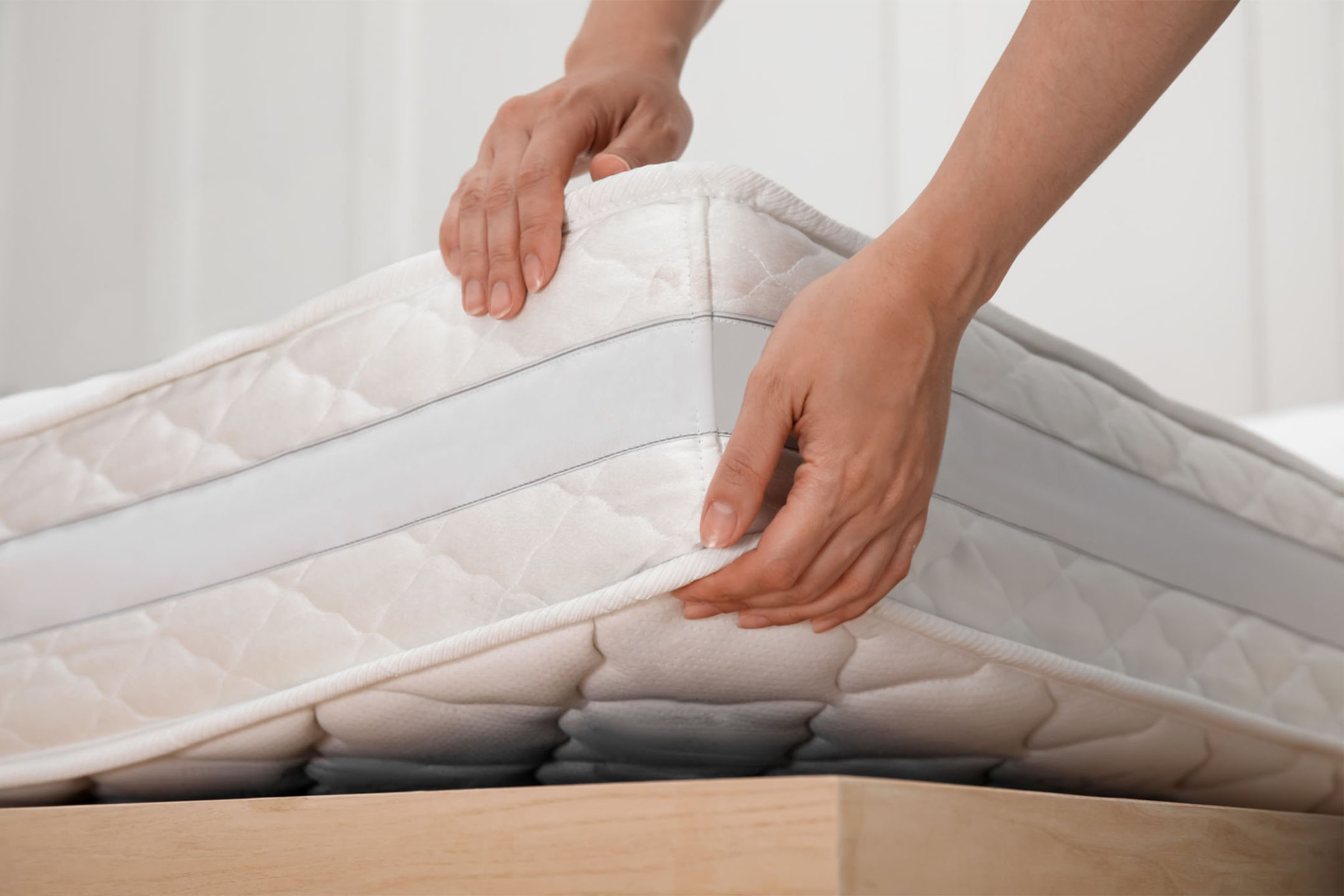
Pocket Sprung Mattresses
Pros of Pocket Sprung Mattresses:
- Responsive support: Each spring in a pocket sprung mattress is individually wrapped, providing responsive support that adapts to your body’s contours without feeling overly firm.
- Temperature regulation: Pocket sprung mattresses allow air to circulate more freely, helping to keep you cool and comfortable throughout the night.
- Minimal motion transfer: The individually wrapped springs absorb movement locally, making it a great option for couples, as you’re less likely to feel your partner’s movements.
Cons of Pocket Sprung Mattresses:
- Heavier to handle: Due to the springs and added layers, pocket sprung mattresses tend to be heavier, which can make them a bit cumbersome to move or rotate.
- Less body contouring: While supportive, pocket sprung mattresses don’t offer the deep contouring of memory foam, which may be less ideal for those seeking a body-hugging feel.
- Higher cost for premium models: High-quality pocket sprung mattresses with advanced features can be pricier, especially for those with more springs or additional comfort layers.
Magna Beds’ Range of Pocket Sprung Mattresses:
Magna Beds offers a variety of pocket sprung mattresses designed for people who need firm, consistent support without compromising on comfort. We have models with high spring counts for maximum support and luxury finishes that ensure a restful sleep every night. Whether you’re a back sleeper, stomach sleeper, or someone who simply prefers a more structured mattress, our pocket sprung options have you covered.
Hybrid Mattresses
If you’re someone who can’t decide between the cushiony comfort of memory foam and the firm support of pocket springs, then a hybrid mattress might be the perfect fit. As the name suggests, hybrid mattresses combine both foam and spring technologies, offering the best of both worlds. Typically, hybrid mattresses feature a layer of memory foam or latex on top, with pocket springs underneath to provide a balanced mix of comfort and support.
What makes hybrid mattresses so appealing is their versatility. They cater to a wide range of sleepers, whether you like the responsiveness of springs or the contouring feel of foam. This type of mattress is especially good for combination sleepers—those who switch positions throughout the night—as the blend of materials offers adaptable support for different parts of the body.
Pros of Hybrid Mattresses:
- Best of both worlds: Hybrid mattresses combine the contouring comfort of memory foam with the supportive structure of pocket springs, providing a balanced feel that suits various sleep styles.
- Enhanced airflow: The spring layer promotes airflow, which helps regulate temperature and keeps you cooler than all-foam options.
- Responsive support: Hybrids offer a bit more bounce than pure memory foam, making them easier to move around on while still delivering pressure relief and support.
Cons of Hybrid Mattresses:
- Higher price point: The combination of materials and design often makes hybrids more expensive than traditional foam or spring mattresses.
- Heavier and bulkier: Hybrids are generally heavier, which can make moving and setting up a bit more cumbersome.
- Potential for sagging over time: Some hybrids may develop sagging in the foam layers, especially if not rotated periodically.
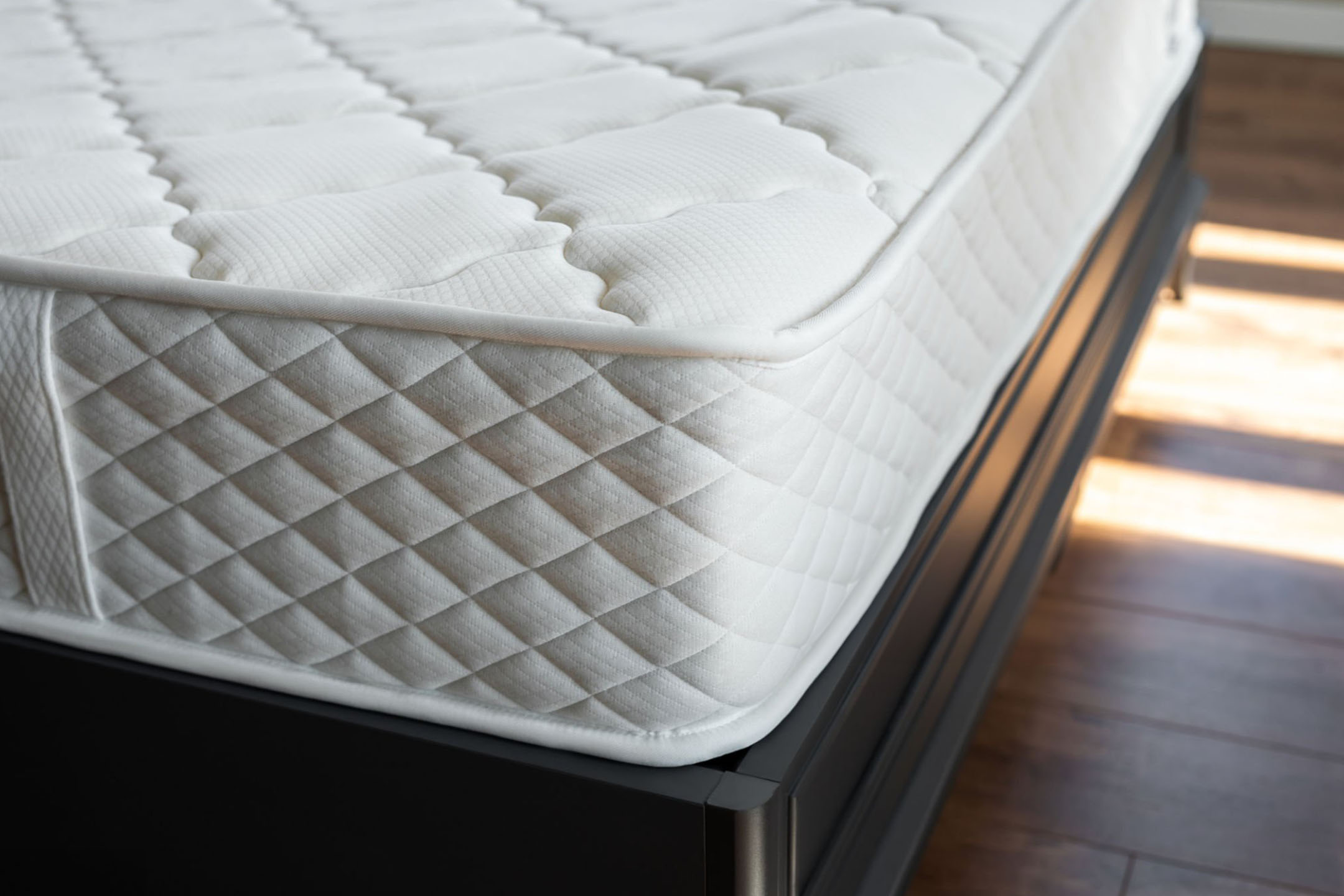
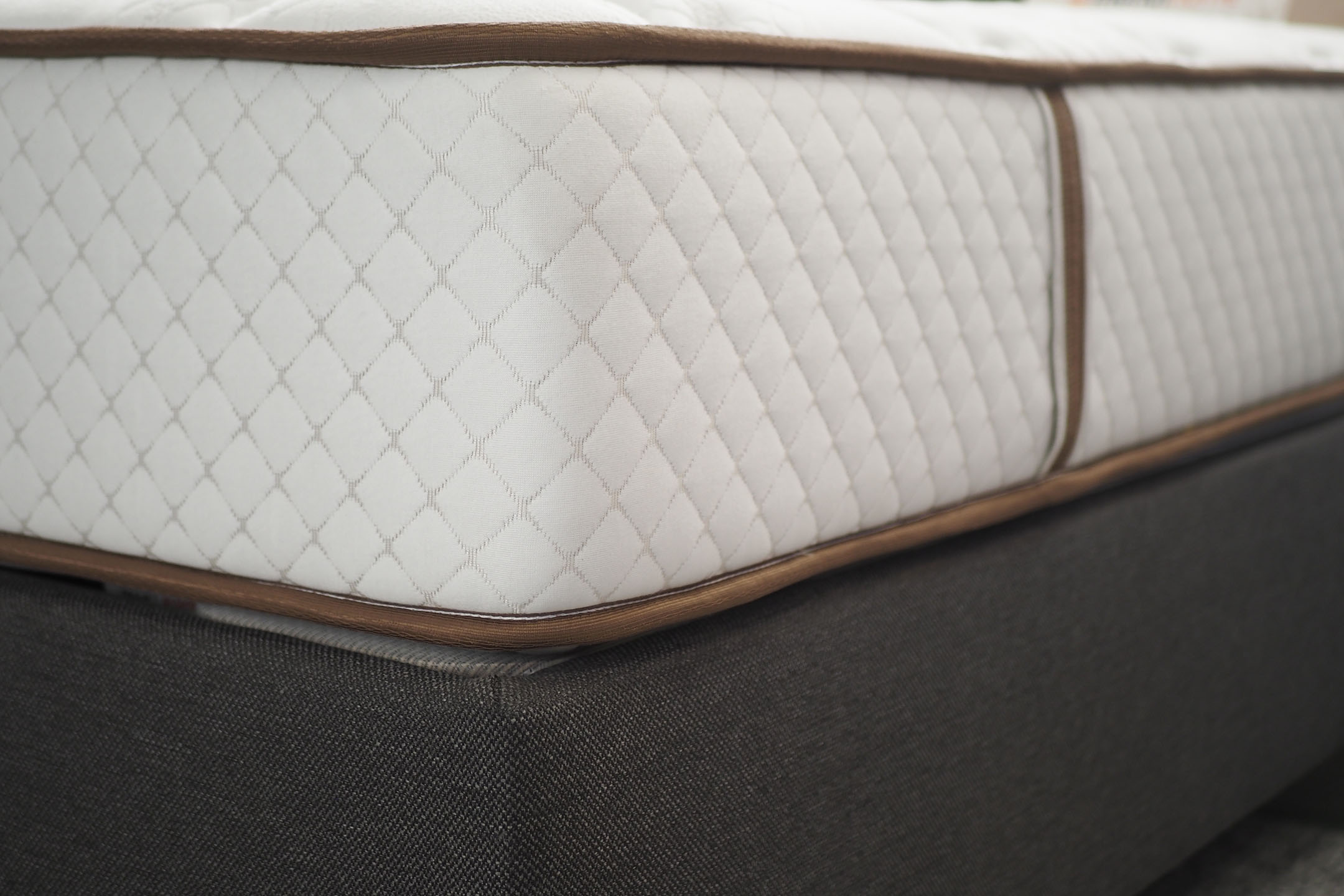
Orthopaedic Mattresses
For those dealing with back pain, joint issues, or general discomfort, an orthopaedic mattress is often recommended. These mattresses are specifically designed to offer firm, structured support that promotes healthy spinal alignment, alleviating pressure on sensitive areas. By providing the right level of firmness, orthopaedic mattresses help reduce the strain on your back, neck, and joints, making them ideal for people with existing pain or those who prefer a firmer sleeping surface.
Orthopaedic mattresses are not just for those with medical needs—they’re also great for anyone who prefers a more supportive, no-sink sleeping experience. If you frequently wake up with aches or pains, it might be time to consider switching to an orthopaedic option that prioritises your body’s alignment and comfort.
Pros of Pocket Sprung Mattresses:
- Targeted support: Each spring works independently to provide support exactly where it’s needed, helping to maintain a comfortable sleep position and reduce pressure points.
- Great airflow: The structure of pocket springs allows for excellent airflow, helping to regulate temperature for a cooler sleep environment.
- Reduced motion transfer: Since each spring is individually wrapped, movement is isolated, which is ideal if you share your bed and want to avoid disturbances.
Cons of Pocket Sprung Mattresses:
- Heavier and harder to move: With multiple layers and spring construction, pocket sprung mattresses can be bulky and challenging to move.
- Less contouring than foam: While supportive, pocket sprung mattresses don’t contour as closely as memory foam, which might not suit those looking for a body-hugging feel.
- Higher price for premium options: High-end pocket sprung mattresses, especially those with more springs or added comfort layers, can be more expensive.
How to Choose a Mattress That Fits Your Needs and Budget
Choosing the right mattress isn’t just about comfort and support—it’s also about finding a balance between your sleep needs and your budget. With so many options available, prices can range from affordable to premium, and it’s important to know what influences the cost so you can make an informed decision without overspending. Investing in a quality mattress that fits within your budget doesn’t mean you have to compromise on the essentials that matter most for a good night’s sleep. Let’s explore how you can set a realistic budget and what you should look for in a mattress that offers the best value for your money.
Setting a Budget
When it comes to buying a mattress, setting a budget should be your first step. Mattresses come in a wide range of prices, from budget-friendly options to luxurious models that come with extra features. Generally, the price of a mattress is influenced by several factors, including the materials used, the level of craftsmanship, brand reputation, and added features like cooling technologies or built-in motion isolation. While higher-priced mattresses often boast premium materials or enhanced comfort, there are plenty of budget-friendly options that can still provide you with the right level of support and durability.
Here’s a general overview of mattress price ranges:
- Budget Mattresses: Typically priced between £100 and £500. These mattresses usually feature simpler designs, such as open-coil or basic memory foam options. They may not have advanced features but can still offer decent support for those on a tight budget.
- Mid-Range Mattresses: Priced from £200 to £500, these mattresses often combine good materials and more advanced features like pocket springs, memory foam layers, and cooling technologies.
- Premium Mattresses: Ranging from £500 and above, these high-end mattresses come with top-of-the-line materials, cutting-edge sleep technology, and often boast longer lifespans. They are typically designed for sleepers who want luxury and maximum comfort.
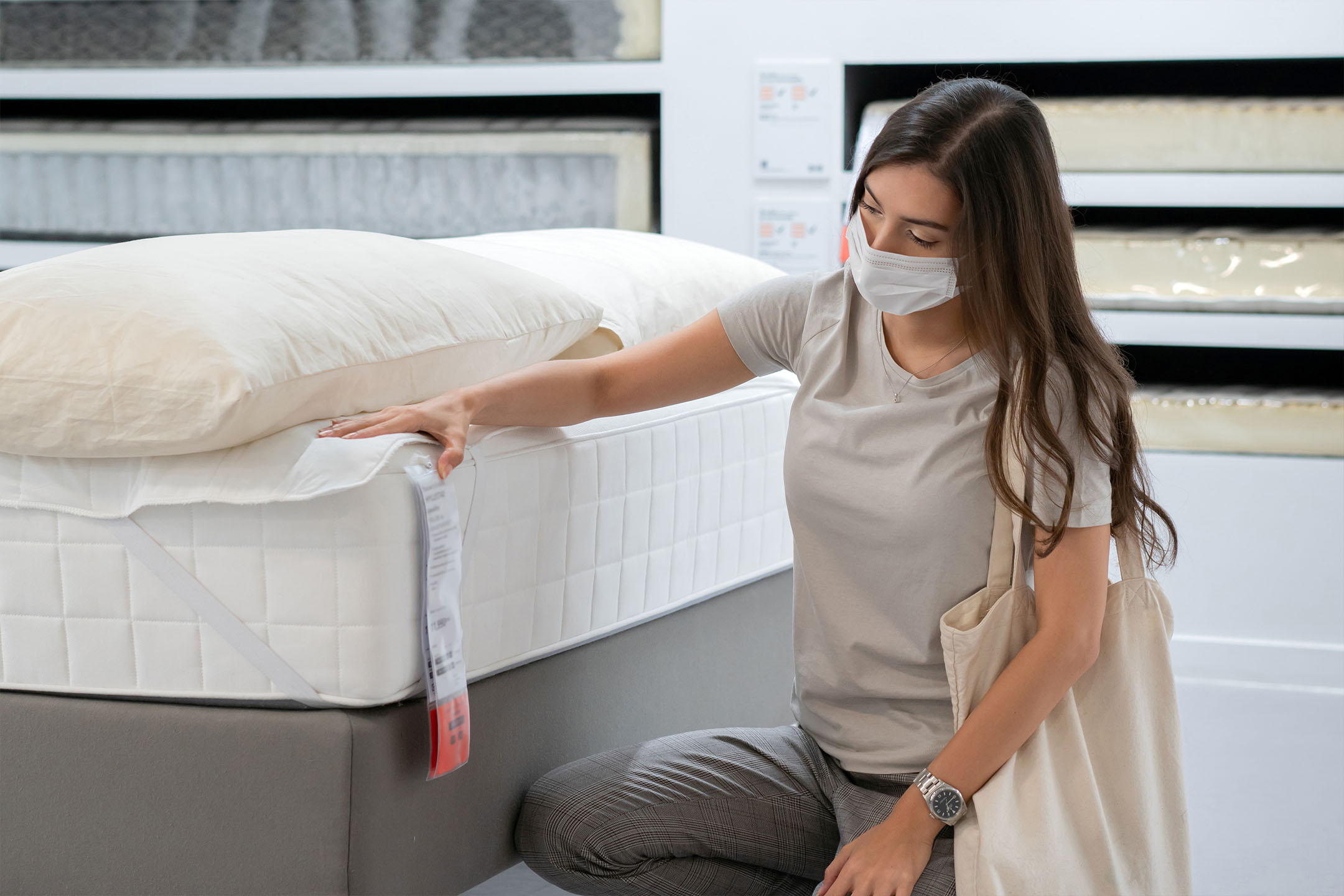
The key to setting a budget is knowing what features are non-negotiable for you. For instance, if you suffer from back pain, it might be worth spending a bit more on an orthopaedic mattress with the right level of support. If you sleep hot, you may want to look at mid-range options with cooling properties. Ultimately, the goal is to find a mattress that fits your sleep needs without stretching your budget too far.
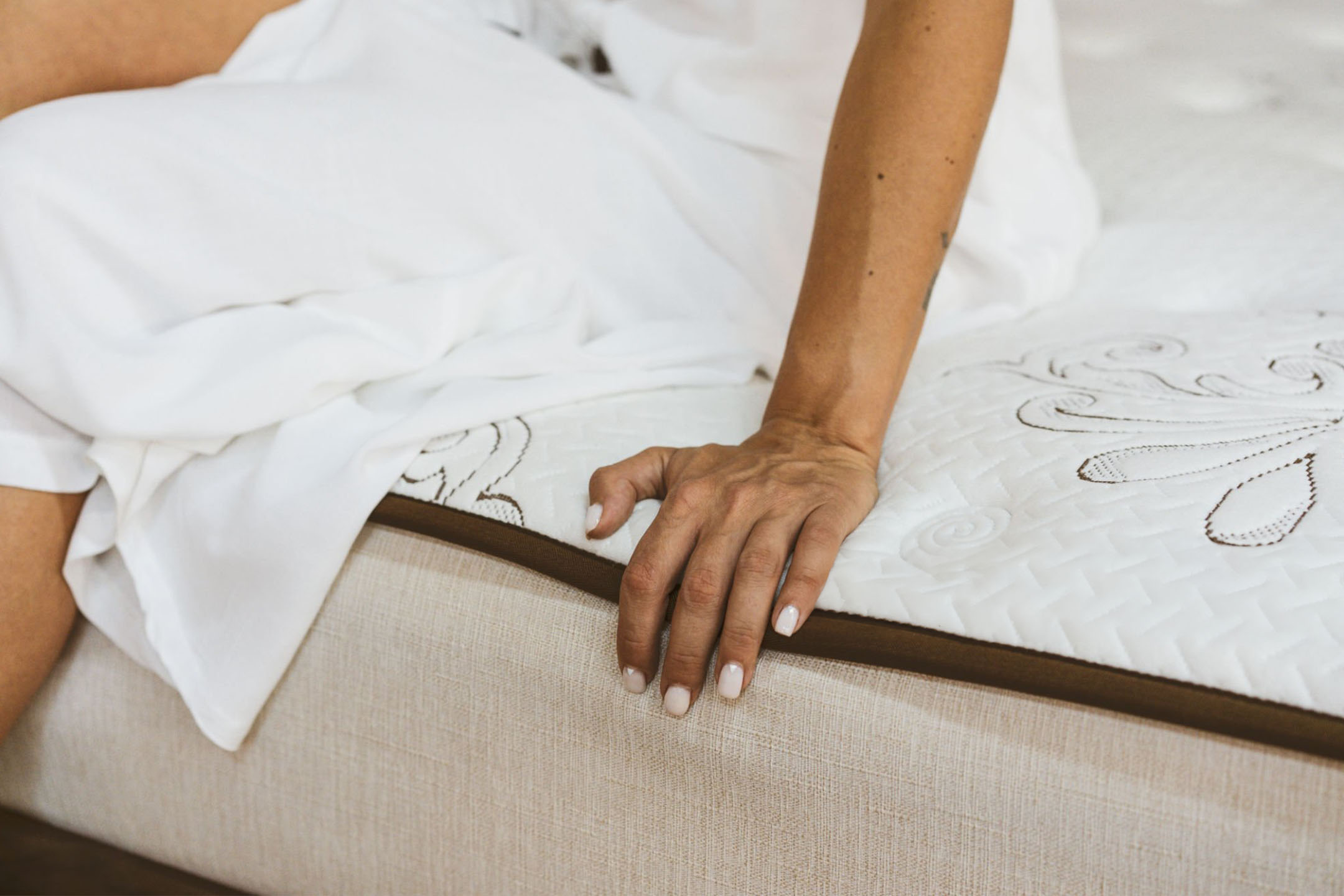
Balancing Cost with Quality
While it’s tempting to go straight for the cheapest option, a mattress is an investment in your long-term health and wellbeing. Balancing cost with quality is crucial when making your choice, as a poorly made mattress could result in years of discomfort and restless nights. It’s important to think about what you’re really paying for and how to prioritise your needs.
If you’re on a tight budget, focus on getting the essentials right: support and comfort. A basic memory foam or pocket sprung mattress can still provide excellent sleep if chosen wisely. Look for products that prioritise spinal support and pressure relief. Avoid mattresses that offer flashy extras but compromise on core qualities like durability and firmness.
On the other hand, if your budget allows, a premium mattress might be worth the investment if you’re looking for long-term comfort and advanced features. Premium mattresses typically come with better durability, more layers of support, and features like motion isolation or temperature control, which can make a significant difference if you share a bed or sleep hot. The extra investment can often mean fewer replacements over time, saving money in the long run.
What to Look for in a Budget Mattress vs. a Premium Mattress:
- Budget Mattresses: Focus on core needs like firmness, support, and durability. While they may not have advanced features, a good budget mattress should still provide a comfortable, supportive surface for quality sleep.
- Premium Mattresses: Look for added features like multi-layered support systems, memory foam for pressure relief, cooling technology, and motion isolation. Premium options are often better for those with specific needs like back pain or restless sleeping patterns.
Additional Features to Consider When Buying a Mattress
When shopping for the perfect mattress, it’s easy to focus solely on comfort and support. While those are crucial elements, there are additional features that can elevate your sleep experience and make your mattress more functional and long-lasting. Whether you're sharing a bed with a partner, prone to allergies, or simply looking for a mattress that stays firm at the edges, these extra details can make a huge difference. Let’s dive into three important features—motion isolation, edge support, and anti-allergen properties—and see how Magna Beds delivers on all fronts.
Motion Isolation
If you share a bed with someone, especially if one of you is a light sleeper, motion isolation is an absolute must. We’ve all experienced those frustrating nights when a restless partner tosses and turns, leaving you wide awake. That’s where motion isolation comes in. Mattresses with good motion isolation prevent movement from transferring across the surface of the bed, meaning that one person can roll over, get up, or shift positions without disturbing the other sleeper.
This feature is especially useful for couples where one partner may have different sleep habits—maybe they’re a night owl while you prefer early mornings, or perhaps one of you is prone to tossing and turning. Memory foam and pocket sprung mattresses are particularly effective at absorbing motion.
Motion Isolation Mattresses: These mattresses ensure that no matter how much your partner moves, you won’t feel it. Say goodbye to sleepless nights and enjoy a peaceful, undisturbed rest.
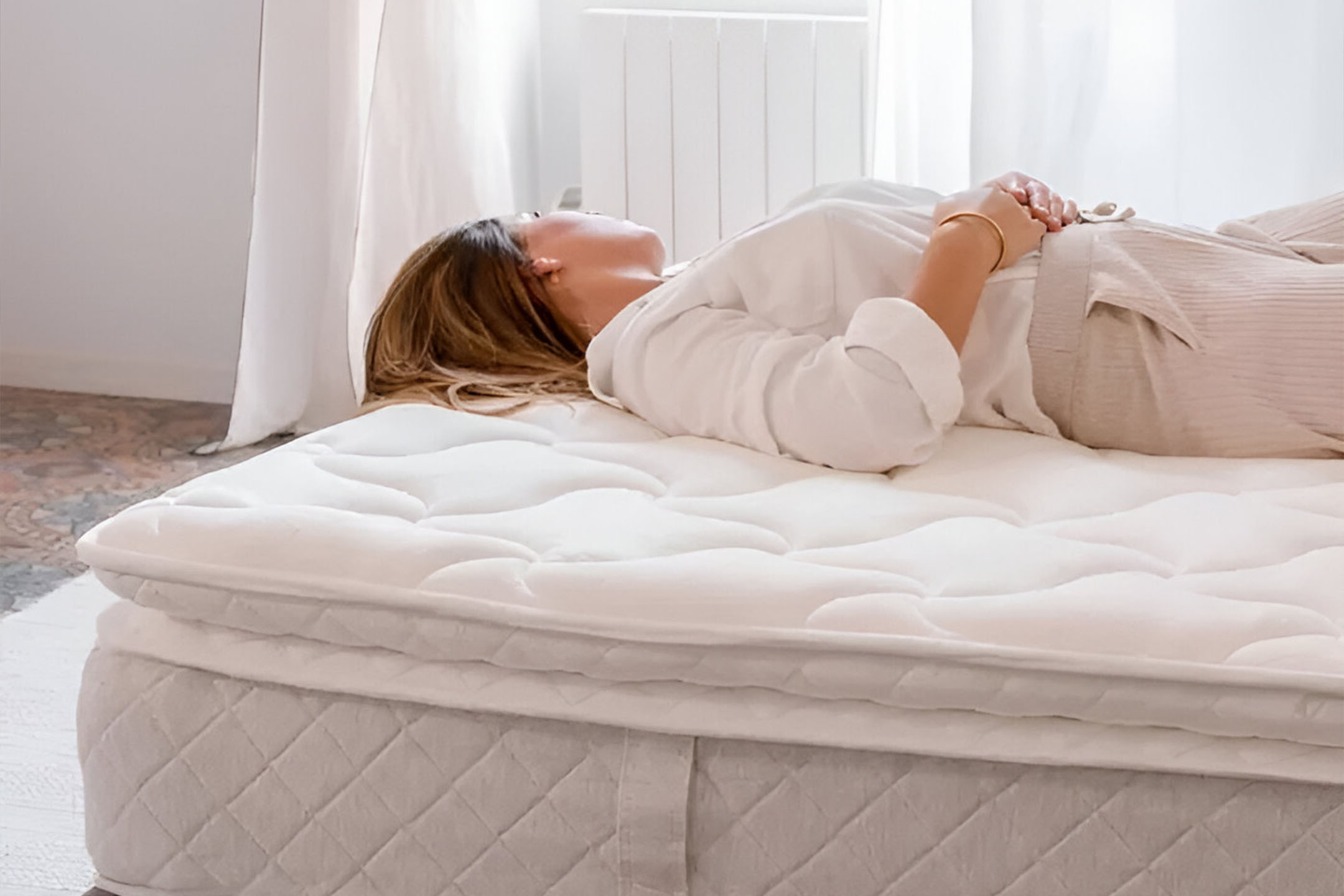
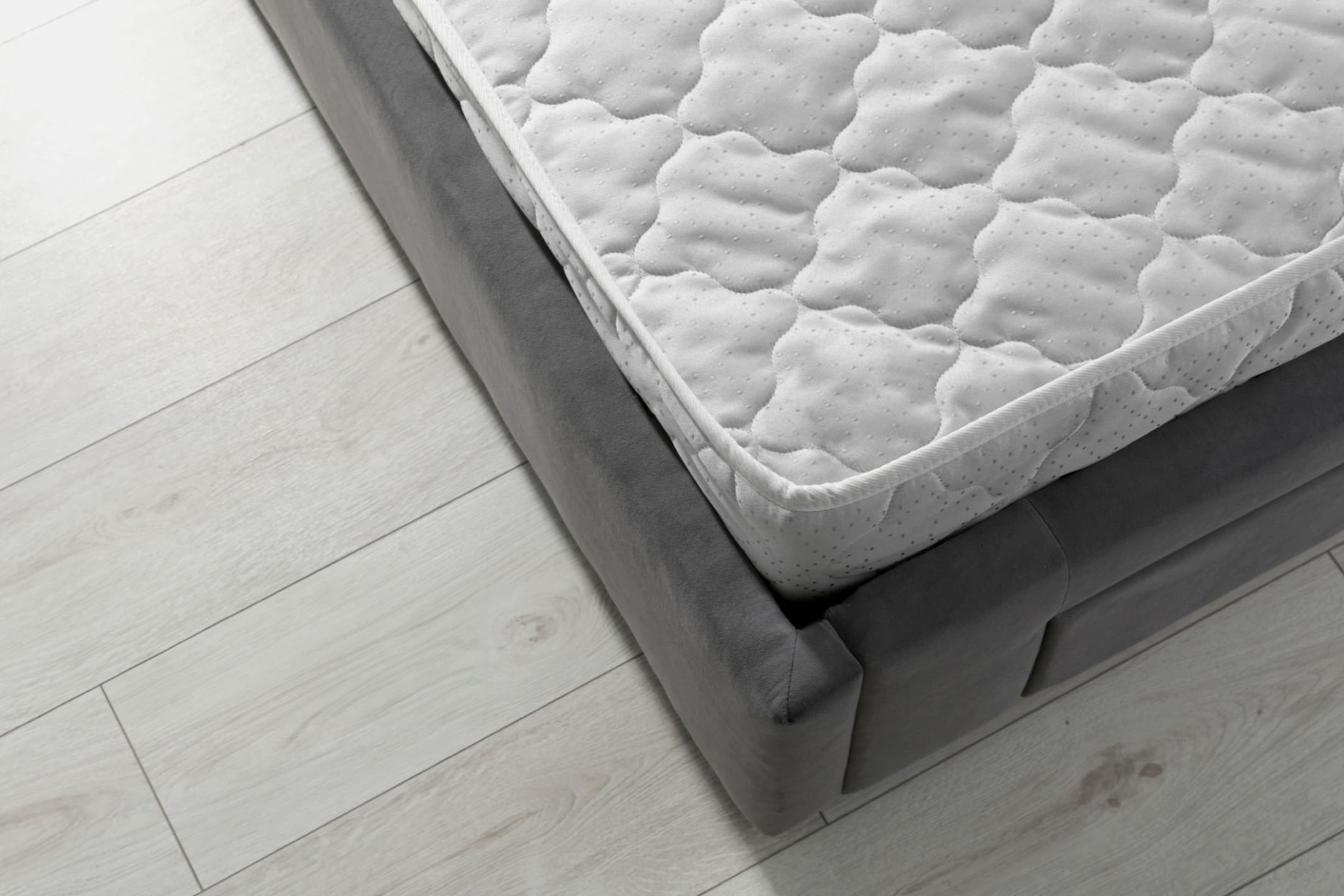
Edge Support
Edge support is another feature that often goes unnoticed but can significantly impact the overall quality and durability of your mattress. A mattress with strong edge support provides stability around the perimeter, preventing sagging and maintaining its shape over time. This is particularly important if you tend to sit or sleep near the edge of the bed, as weak edge support can cause the mattress to lose its structure prematurely.
In addition to durability, good edge support also increases the usable sleeping surface of the mattress. Without it, you might feel like you're slipping off the side if you get too close, which can reduce your overall comfort and make the bed feel smaller than it is.
Anti-Allergen and Dust Mite Resistance
For anyone who suffers from allergies or sensitive skin, a mattress that offers anti-allergen and dust mite resistance is essential. Dust mites are tiny creatures that thrive in warm, humid environments—like your bed. These microscopic pests can trigger allergic reactions, including sneezing, itching, and breathing difficulties. If you or your partner suffer from allergies or asthma, it’s crucial to choose a mattress that is designed to reduce allergens.
Mattresses made from hypoallergenic materials, such as latex, organic wool, or specially treated foams, can help create a healthier sleep environment by resisting dust mites and other common allergens. Anti-allergen mattresses are designed with breathability in mind, helping to reduce moisture and humidity where dust mites thrive.
Anti-Allergen Mattresses: Hypoallergenic mattresses are made from materials that resist dust mites and other allergens, ensuring you have a cleaner, healthier sleep environment.
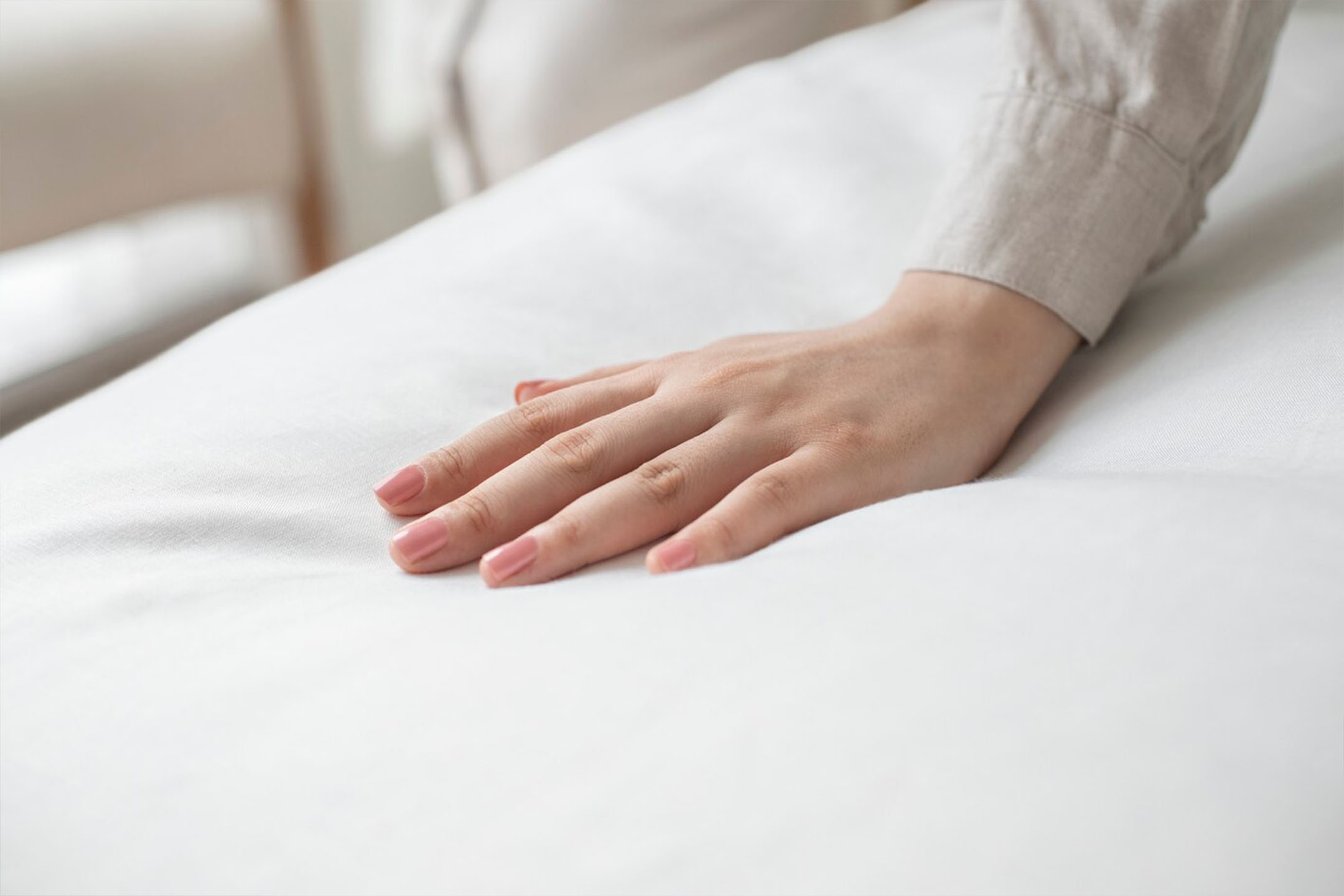
FAQs Regarding Choosing The Right Mattress
Choosing the right mattress can feel overwhelming with so many options available. To help simplify things, we’ve answered some of the most common questions to guide you on your way to finding the perfect sleep solution.
How Often Should I Replace My Mattress?
On average, you should replace your mattress every 7 to 10 years. However, the lifespan of your mattress depends on its material and quality. If you notice sagging, discomfort, or worsening sleep quality, it may be time to invest in a new one.
What’s The Best Mattress For Back Pain?
For those with back pain, a mattress that offers firm support and proper spinal alignment is essential. Orthopaedic mattresses are a great choice, as they provide the right balance of firmness and comfort to alleviate pressure on your spine.
Which Mattress Is Ideal For Couples?
Couples often need a mattress that offers motion isolation to minimise disturbances caused by one partner moving during the night. Pocket sprung and memory foam mattresses excel in this area.
What’s The Best Mattress For Side Sleepers?
Side sleepers benefit from a softer mattress that provides cushioning for pressure points like the hips and shoulders. Memory foam mattresses are a great option because they contour to your body.
Do I Need A Firm Or Soft Mattress?
The firmness of your mattress depends on your sleep position and personal preferences. Stomach and back sleepers typically do well with firmer mattresses that keep their spine aligned, while side sleepers prefer a softer surface that cushions pressure points. Magna Beds offers mattresses in various firmness levels, ensuring you find the perfect fit.
Explore the full range of Magna Beds’ mattresses and find the one that answers all your sleep needs, whether it's for back pain relief, motion isolation, or pressure point support.
Investing in the right mattress is one of the best decisions you can make for your health, comfort, and overall well-being. A mattress that fits your body and sleep style can transform the quality of your sleep, giving you the energy and focus you need to tackle each day with ease. As we’ve explored throughout this guide, different mattresses cater to different needs—whether you’re a side sleeper looking for pressure relief, a couple seeking motion isolation, or someone dealing with back pain needing firm support.
When it comes to choosing a mattress, it’s not just about picking something comfortable; it’s about ensuring the mattress you choose provides the right support, durability, and additional features to meet your specific sleep needs.
Ready to experience better sleep? Explore Magna Beds’ mattress collection and discover the difference a quality mattress can make in your life. Your best sleep is just a click away!






